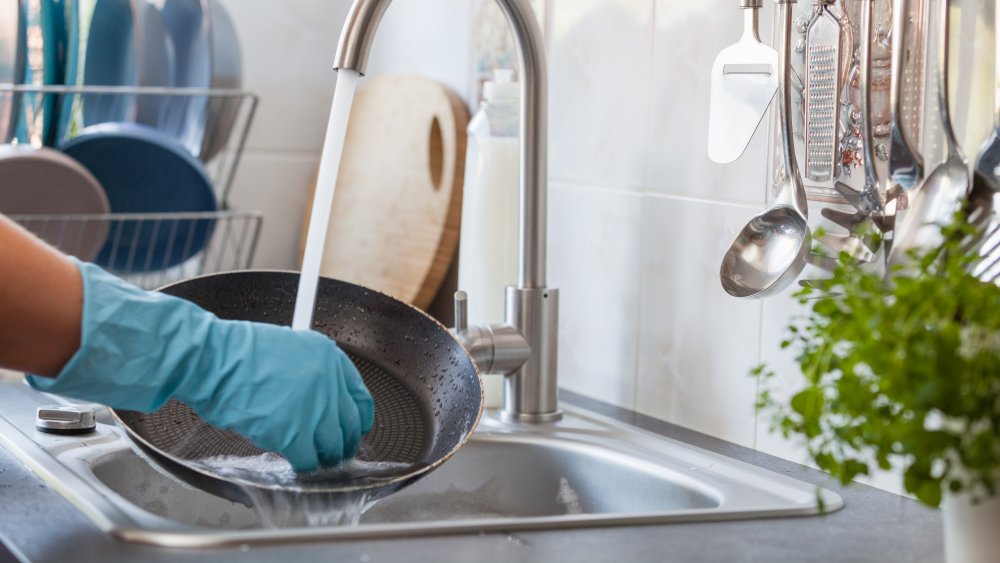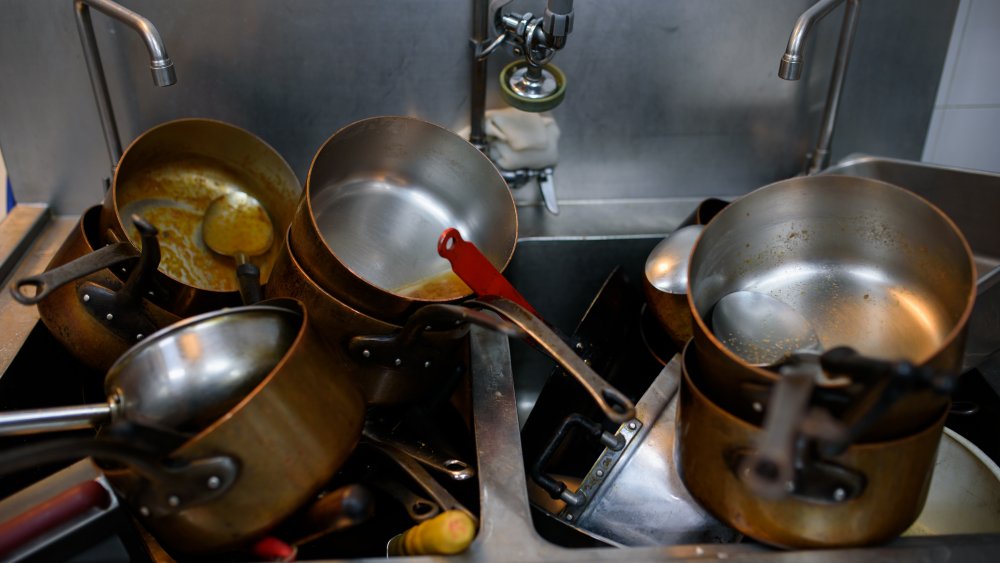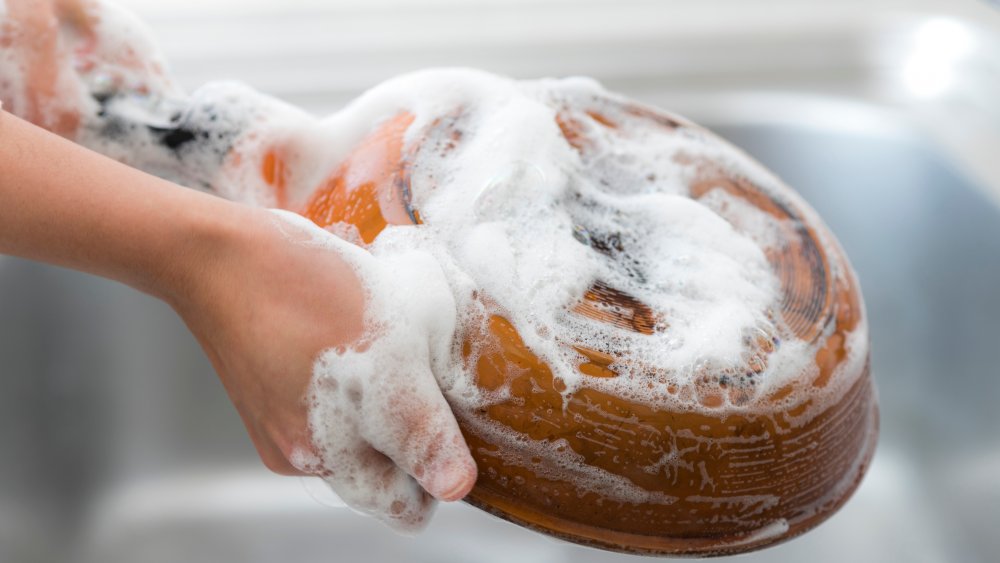The Reason You Should Never Wash A Hot Pan
It may seem logical to throw a hot pan in the sink as soon as you're done cooking — after all, it should be easier to clean off any gunk and grime (such as sugar residue from candy making or the remnants of a seared steak) from the surface before it starts to stick. But it turns out that thrusting hot cookware under the faucet is one of the worst things you can do to your pots and pans.
Adding water to your pan while it's hot can help deglaze any stuck-on bits from the surface of your pan, but it's what water does to the structure of the pan itself that you should be concerned about. You may be better of using a little elbow grease later rather than risk ruining your pans to help get them clean.
Why it's bad to put a hot pan in water
If you've ever had a pot or pan that wobbled on your burner and refused to lay flat, chances are you're dealing with a warped pan. Warping occurs when pans undergo thermal shock — which is what happens when you put a hot pan in cold water (via HuffPost).
According to a Calphalon representative, "By rapidly lowering the temperature of a pan, warping and cracking may occur. If warping occurs, the bottom of the pan will become uneven." Also, thermal shock can cause pans to develop hot and cold spots, which leads to uneven cooking.
Instead, they recommend that pans should be allowed to cool a bit before being washed.
How to clean pots and pans
There are a few different ways to safely clean your cookware.
You should allow your stainless steel pans to cool at room temperature, and if there are any stubborn stuck-on food bits, you can soak it in warm, soapy water for a few minutes, and then clean as usual with soap and a sponge. Stubborn bits can be scraped away with a wooden spoon or a paste of baking soda and water (via Jezebel).
If you're working with nonstick cookware, it should be pretty easy to clean. Let your pot or pan cool at room temperature, then wash with hot, soapy water, using a non-scratch sponge.
The most important thing to remember with cast iron is to not to soak it in water. Instead, remove stubborn stuck-on bits of food with warm water, soap, and a kitchen sponge, and dry thoroughly when done (via Serious Eats). For really stubborn bits, you can use salt as an abrasive.


